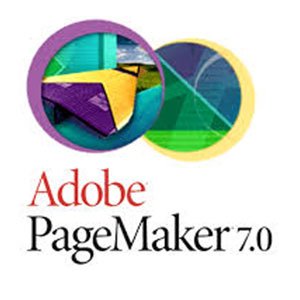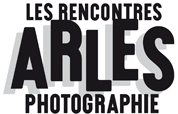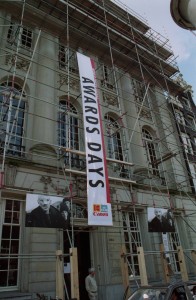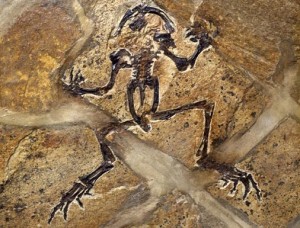 [In February of 2000 I received an unexpected invitation to write and deliver the keynote address to the annual World Press Photo Awards Days upcoming that April in Amsterdam.
[In February of 2000 I received an unexpected invitation to write and deliver the keynote address to the annual World Press Photo Awards Days upcoming that April in Amsterdam.
Though I don’t work professionally in any capacity within the disciplines of press photography and photojournalism, I thought that, by weaving together from my outsider’s perspective a number of relevant issues I do address, I might generate something provocative and engaging for the WPP audience. So I accepted the commission and set to work.
Looking back at any prophecy 20 years on has a humbling effect. Technologies we all considered cutting-edge at the time have become historical artifacts, quickly slipping into obsolescence. Tools and working methods I couldn’t anticipate shifted trajectories. Economic forces revised many assumptions.
So consider this a time capsule, as well as a period piece. Still, I hope that at least is makes for interesting reading, as you discover where I missed the mark and where I scored a bull’s-eye.
The concluding Part 3 appears below. Click here for Part 1, and here for Part 2. You can download a PDF file of the complete text here. — A.D.C.]
•
2020 Vision:
Photojournalism’s Next Two Decades (conclusion)
… Because you’re producing this in web-ready multimedia format, you’re also simultaneously generating components of your first CD-ROM. Well, not exactly your first; you’ve done several simple, self-promotional CD-ROMs as leave-behinds for clients, showcasing your images and your multimedia skills. But this is a substantial project that you’ve already worked on for two years, about an important subject that interests many people. Certainly a CD-ROM version of it has an audience, and a market — and will also serve as a permanent record of this story. And you’ve done some serious thinking about the CD-ROM as a form, so your project makes better use of that medium than most documentary projects do.
![]() Repurposing the web version for the CD-ROM, or vice versa, is easy. You’ll burn the master of the CD-ROM yourself, as well as all the copies; you’ll design the accompanying booklet and jewel-case insert in PageMaker. And you’ll sell it through the website. Subscribers will get a discounted price; those who want the CD-ROM only will pay full price for it. You’re using web searches to identify potential distributors and retail outlets for it too.
Repurposing the web version for the CD-ROM, or vice versa, is easy. You’ll burn the master of the CD-ROM yourself, as well as all the copies; you’ll design the accompanying booklet and jewel-case insert in PageMaker. And you’ll sell it through the website. Subscribers will get a discounted price; those who want the CD-ROM only will pay full price for it. You’re using web searches to identify potential distributors and retail outlets for it too.
•
 Of course, the project could also take the form of a book. You’ve already started laying it out in PageMaker — multipurposing the material, once again. Here you’re not quite sure if you’ll publish the book yourself or look for an outside publisher. The answer to that may depend on the audience response to the project in its web and CD-ROM forms; if it draws enough attention, a publisher may actually come to you. But you may just decide to take a flyer on it and test the waters by commissioning a low-risk, short-run edition of 400 copies or so, to sell through the website, or else set up a version through a print-on-demand system that would supply copies directly to individual customers as they ordered them.
Of course, the project could also take the form of a book. You’ve already started laying it out in PageMaker — multipurposing the material, once again. Here you’re not quite sure if you’ll publish the book yourself or look for an outside publisher. The answer to that may depend on the audience response to the project in its web and CD-ROM forms; if it draws enough attention, a publisher may actually come to you. But you may just decide to take a flyer on it and test the waters by commissioning a low-risk, short-run edition of 400 copies or so, to sell through the website, or else set up a version through a print-on-demand system that would supply copies directly to individual customers as they ordered them.
You’d still have complete control over layout and design, but you’re not yet happy with the reproduction quality available that way; you’re not sure that these new methods can deliver an end result that does justice to your imagery. Or you may just decide to post these layouts as PDF files in Adobe Acrobat — let people download them from the Web and, if they so choose, print them out themselves. In any case, that decision is a year down the line, so you’ll just wait and see.
•
You’re completely at ease with digital systems, as are most of your cohort. But you realize that there are lots of people who won’t find the work online, and don’t enjoy receiving their social commentary through CD-ROMs on computers. So you’ve got a hit list of potential print-media outlets for this story, as you unfold it — in different countries and regions, in different languages, reaching many different audiences. As soon as your website starts getting some attention and some traffic, you’ll start pitching them. Your cousin Sarah wants to take that on too; she says it’s way cooler than baby-sitting as a means of making spending money and building her college fund.
•
You’ll offer signed original prints of the images for sale through the website, needless to say, but you don’t expect that to be a significant market, at least not at this point: it’s a painful story you’re narrating, the pictures are tough, and you’re unknown — not the sort of stuff that draws the collecting crowd. By the same token, museums and commercial galleries won’t likely come flocking around to ask about showing the work, at least not until you’re established. But there are all kinds of other venues that might jump at it. There are thousands of alternative photo- and art-presentation spaces around the world — artist-run and municipally sponsored non-profit galleries; college, university, and art-institute galleries; and, of course, the international photo festival circuit.
 Something like seven million people attend photo festivals every year, and those events are always looking for exciting new material to present. Some of them are even dedicated exclusively to your kind of work, photojournalism; but just about all of them include it as a component of their offerings. And you heard the critic A. D. Coleman say, during a lecture at your school, that the cutting edge of photography in all forms was no longer to be found in the offerings of galleries and museums, but at these festivals, which he thinks are five to ten years ahead of the gallery-museum circuit.
Something like seven million people attend photo festivals every year, and those events are always looking for exciting new material to present. Some of them are even dedicated exclusively to your kind of work, photojournalism; but just about all of them include it as a component of their offerings. And you heard the critic A. D. Coleman say, during a lecture at your school, that the cutting edge of photography in all forms was no longer to be found in the offerings of galleries and museums, but at these festivals, which he thinks are five to ten years ahead of the gallery-museum circuit.
You’ve searched the web and the literature; you’ve made a list of three dozen of these festivals and several hundred of the school-based galleries and alternative spaces, and you’ve started to contact them. You’re not unrealistic in your expectations. You know that, because you’re not a big name, the festivals are not likely to be willing to spend much money on showing your work; and these other spaces don’t have much to spend in any case.
So you’ve decided to make it easy for them. You’re producing a traveling show that fits in two small shipping cases, 30 inches long by 40 inches wide by 6 inches deep. Each holds fifteen 30×40″ panels. Each panel is a sheet of four-ply mount board, on which you’ve dry-mounted a cluster of excellent laser-jet prints of images, along with captions and a text sheet. Each of these panels is laminated on the front, to protect the images, and numbered on the back. Along the top edge of each panel are metal grommets, so that it can hang from four strings, hooks, or nails. Once you decide how to organize the work in any given space, it takes about an hour to mount it and fifteen minutes to take it down and get it ready to travel on. You got this idea from a show by a couple of South African photographers that you helped to install in your school’s gallery, and from some World Press Photo shows you’ve seen.
Add to these image-text panels your CD-ROM, playing on a computer in the exhibition space, and/or an accompanying videotape that you’re producing yourself and are multipurposing, and/or a slide projection version with a soundtrack, and you can deliver to any audience most of the ideas and information you want them to have efficiently and inexpensively. No, it’s nowhere as slick as a fancy commercial-gallery show with individually framed and matted original prints, but that form of presentation isn’t really appropriate to your subject matter anyhow.
•
Of course, the material from this project becomes part of your inventory.  But it also becomes part of your archive, and you understand it as such. By the end of the twentieth century, you and your classmates were reading about the disposition of this or that photographer’s life’s work. Some did it well, some did it badly, and some didn’t do it at all — so the stuff got tossed out, or damaged, or dispersed, or simply vanished into thin air. People were stealing negatives, forging prints, taking images that photographers had never wanted to exhibit or publish and adding them to the photographers’ bodies of work without clear annotation, and generally carrying on as if, after death, one was free to do anything one wanted to with a photographer’s output. That didn’t seem right at all.
But it also becomes part of your archive, and you understand it as such. By the end of the twentieth century, you and your classmates were reading about the disposition of this or that photographer’s life’s work. Some did it well, some did it badly, and some didn’t do it at all — so the stuff got tossed out, or damaged, or dispersed, or simply vanished into thin air. People were stealing negatives, forging prints, taking images that photographers had never wanted to exhibit or publish and adding them to the photographers’ bodies of work without clear annotation, and generally carrying on as if, after death, one was free to do anything one wanted to with a photographer’s output. That didn’t seem right at all.
You and your friends talked about this a lot, and most of you decided that the best way to put a stop to that was to start keeping accurate records early on,  make clear in writing your wishes regarding various photos — especially any that you never want made public — and draw up a will covering those matters and naming someone to take charge of them. Even if that did seem way premature at age 22. Besides protecting yourselves, though, what you all could see clearly was that, if you stayed in the field for a good length of time, and certainly if you devoted your life to it, you gradually built up a huge pile of material that had all kinds of value. It had social value, it had historical value, it had scholarly value, it sometimes even had artistic value — and it almost always had some financial value as well.
make clear in writing your wishes regarding various photos — especially any that you never want made public — and draw up a will covering those matters and naming someone to take charge of them. Even if that did seem way premature at age 22. Besides protecting yourselves, though, what you all could see clearly was that, if you stayed in the field for a good length of time, and certainly if you devoted your life to it, you gradually built up a huge pile of material that had all kinds of value. It had social value, it had historical value, it had scholarly value, it sometimes even had artistic value — and it almost always had some financial value as well.
The better organized and more comprehensive it was, the more value it had in all those ways. If you didn’t just leave it a heap, if you structured it as a whole, it became an archive. And there were all sorts of different things one could decide to do with an archive. You could license usage rights to its contents and live off it in your old age. You could sell it as such, all of it to one buyer, or auction it off to numerous purchasers. You could donate it to an institution. You could leave it to your family as a source of revenue. You could set up a foundation to manage it. The possibilities made your head spin, but you decided to annotate your contact sheets, maintain thorough records, stay reasonably current with your sorting and filing, keep all your correspondence, tearsheets, and account books, and put all your back files in storage. At least that way you wouldn’t lose things you’d later wish you’d saved.
•
And here’s your master plan:
By the years 2020, when you’re 42, you’ll have all these pieces in place. Your own picture agency, by then licensing rights to an inventory of at least a hundred thousand images and related materials. Multiple websites — one for this agency, one for each of your dozens of major projects by then — linked to each other for maximum traffic. An extensive product line of books, CD-ROMs, videotapes, prints, and other vehicles for your work. A select list of regular clients for your work — publishing outlets in print and in electronic formats — who respect what you do enough that they’ll hire you on your own terms. A network of venues, public spaces where you can show your work to the general audience. And a well-organized storage and retrieval system for everything that by then will add up to a substantial archive, and that you’ll continue to build for the rest of your working life — and that can become a sustaining project if you ever decide to retire.
Your fiancé got so interested in this issue that he opted to take an elective in estate management for artists, and set up computerized systems for you to make it simple to keep track of everything. Which just goes to show that your fiancé, who’s getting his master’s degree in business administration, really does understand most of this. Actually, he’s already talking about incorporating you and taking you public somewhere down the line, though you don’t think you’re anywhere near ready to become an IPO.
Anyhow, he’s one of those sensitive new-type guys who doesn’t have trouble with the idea of his wife having a profession and paying her own way. You’re a good match. In fact, you’ve noticed that a lot of your classmates from the time-based arts program, male and female, have significant others who are MBAs and lawyers and accountants. You think this may be a trend.
Everything in life should work together, you believe, and your fiancé certainly agrees with that. He even understands why your favorite word since you first learned it when you were twelve years old has been synergy. He is so accepting when you shout that in bed at climactic moments. And he’s promised that, in addition to exchanging vows and rings, when you finally do get married he’ll spring for you both getting matching, elegant tattoos of that word, discreetly positioned down where they’ll rub and press against each other on a nightly basis. How sexy is that?
•
Those of you in the audience today who are in fact what I’ve identified here as 21st-century photographers will probably recognize bits and pieces of yourselves in this quick-sketch portrait.[1] My advice to you would be to not write off the geezers around you — or the twentieth-century photographers and picture editors, living or dead — as irrelevant. You’ve still got much to learn from them, and from their work; and, like it or not, they broke the ground, and you stand on their shoulders.
The geezers among you in this room may not yet have encountered this new breed of photojournalist, but trust me when I tell you that they’ll be knocking on your doors — and breathing down your necks — very soon. Yours will be the first older generation of press photographers who will have much to learn from the younger generation in your profession, because they grew up with and take for granted a dramatic technological evolution in your field with which you’re still coming to terms, and which you’re still struggling to master. I recommend that you invite the best ones you can find to intern or apprentice with or assist you, pick their brains shamelessly, and swap tutorials with them. They’ll outgrow you very quickly and move on, but there’s a new crop every year — luckily for you, because the technology updates radically about that often, and you won’t be able to keep up with it on your own.[2]
As for those of you who have resigned yourselves to roles as Jurassic-era twentieth-century figures, on the road to extinction, I urge you to think again. Just about any project you have in mind — especially the long-cherished dreams, the ones you’ve long since relegated to the realm of wishful thinking — have been made more possible, if not downright simple, by developments in communications technology that you’ve been too busy to track. Put those ideas down on paper and place them before students in media arts and time-based arts and photojournalism programs who are hungry for thesis projects and opportunities for independent study, and see what happens. Invite them to reinvent you. The results, in many cases, will surprise you.
For all your differences, none of you are truly irrelevant to each other. Not now, as the 21st century begins, and not for some time to come. This moment of transition, in which centuries and generations will on some levels separate and distinguish themselves from each other, can also serve as an excellent opportunity to find common ground and make common cause in the service of the enduring goal of your profession — which is to provide the citizens of the world with the photographic images and contextualizing material they need to understand what’s going on around the globe.
That task is never completed. You all have something to contribute to it. So enjoy these festivities, and tomorrow’s grand opening of the exhibition. And then, on Tuesday, get back to the job.
•
(This is the complete text of the keynote address to the World Press Photo Awards Days 2000, organized by the World Press Photo Foundation; it was delivered on Sunday, April 16, 2000, in Felix Meritis in Amsterdam, The Netherlands. For subsequent commentary on World Press Photo, click here and here.)
•
Notes:
[1] To my surprise and delight, Tim Hetherington, the young WPP-award-winning photographer who joined me, Manfred Heiting, Grazia Neri, and several others for a panel discussion following this keynote talk, prefaced his comments by saying “I’m the photographer A. D. Coleman just described.” In his own brief talk the following afternoon he proceeded to demonstrate that in detail. He continued to do so throughout his remarkable career, cut short by his death on April 20, 2011 while covering the Libyan civil war; he died making video documentation of the shelling of Misrata by Moammar Khadafy’s forces. (For my comments on Hetherington’s magnum opus, click here.)
[2] Since Eastman Kodak serves as WPP’s main sponsor, the hall was full of mid- and upper-level Kodak executives, most of them middle-aged. I heard from colleagues seated among them that they grumped and grumbled throughout my talk, whose projections they found ridiculous. A year later, at Photokina, Kodak would declare that the company was (belatedly) taking the plunge into the digital realm. In 2011 Kodak busied itself denying the proximity of bankruptcy after a disastrous slump in its market value, primarily the result of the company’s failure to make its mark in the digital-imaging industry. Then, on January 19, 2012, Kodak filed for Chapter 11 bankruptcy protection. (For my comments on the Kodak bankruptcy and the events leading up to it, click here.)
•
 Special offer: If you want me to either continue pursuing a particular subject or give you a break and (for one post) write on a topic — my choice — other than the current main story, make a donation of $50 via the PayPal widget below, indicating your preference in a note accompanying your donation. I’ll credit you as that new post’s sponsor, and link to a website of your choosing.
Special offer: If you want me to either continue pursuing a particular subject or give you a break and (for one post) write on a topic — my choice — other than the current main story, make a donation of $50 via the PayPal widget below, indicating your preference in a note accompanying your donation. I’ll credit you as that new post’s sponsor, and link to a website of your choosing.
And, as a bonus, I’ll send you a signed copy of my new book, poetic license / poetic justice — published under my full name, Allan Douglass Coleman, which I use for my creative writing.








Leave a Comment